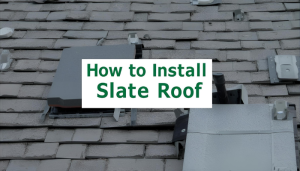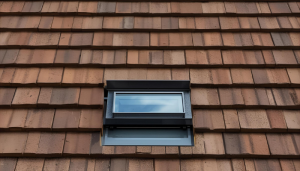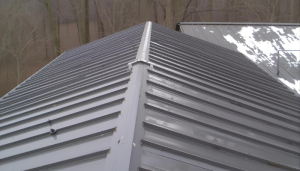Soffit and fascia replacement is not glamorous, yet among the most effective home repairs to avoid water damage and keep pests out. In case you are looking to know how to replace soffit and fascia, this guide will take you through the process: what to check, the equipment you will make use of, and a stepwise method that is sure to work!
When to Replace Soffit and Fascia
Before you begin to work, look for the following indications:
- Rotting or soft wood along the eaves.
- Scraping paint, water spots, or noticeable cracks.
- Bird or rodent entry points.
- Missing or loose soffit vents.
When you notice any of them, the sooner you replace the soffit and fascia, the better.
Tools & Materials Needed
| Tools | Materials |
| Ladder, pry bar, circular saw, drill | New soffit panels (vented/solid), fascia boards |
| Measuring tape, caulk gun, tin snips | Flashing/drip edge, exterior screws, sealant |
| Safety gear (gloves, eye protection) | Paint/finish or prefinished materials |
Read more: What Is A Hip Roof?
How To Replace Soffit and Fascia: Step-by-step
1. Inspect and Prepare
Use a stable ladder to work with a helper. Remove all the gutters that extend over the fascia. Record the damaged spot and measure the replacement length.
2. Remove Old Soffit and Fascia
Gently detach the old soffit panels and fascia board. Watch out for concealed rot on the rafter tails, or purlins, and replace any rotted wood before proceeding.
3. Repair the Structure
Install replacement rafter tail pieces or blocking where necessary. Ensure that the surface is flat and smooth; a curved fascia will be problematic to complete the work.
A stable roofing system ensures longevity! Learn How To Fix Roof Flashing here!
4. Install New Fascia and Drip Edge
Fit the new fascia board to the tails of rafters using exterior-grade screws. A drip edge or flashing made of metal should be installed along the fascia to direct water to the gutter.
5. Fit Soffit Panels
Install slide-vented/solid soffit panels by attaching them to the soffit framing as directed by the manufacturer. Vented panels must be placed in a manner that gives adequate attic ventilation.
6. Finish and Seal
Seal off all seams where required, re-place gutters, and paint or apply finished material to a long-lasting covering. Clear debris and check that there are no gaps.
When to Call a Professional
When there is extensive rot, insect damage, or your roofline is complex, Hire a qualified contractor. Pros are best suited to structural problems and concealed water damage. Let our professional and dedicated roofers fix your Commercial Roofing issues!
The Bottom Line
Learning how to replace soffit and fascia will help protect your roof line and save you more in the long run. This can be safely done by many homeowners with proper inspection, proper tools, and consideration of ventilation and flashing. To know more about the fundamentals of roofing and receive tips, go to RoofFixer!




